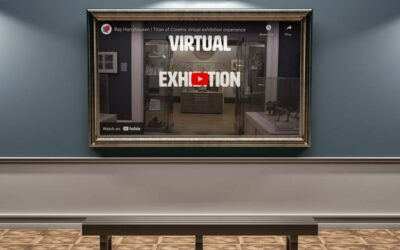Best Practice Knowledge Management is Content Plus Connection, Part Two
Lucidea
In our first post on the changing habits of information consumers and the changing role of information professionals as part of the knowledge supply chain, we shared examples of increasing complexity, underpinned by technology and changes in personal preference. In this post, let’s take a look at the third paradigm (KM 3.0) and see what it means for the sustainability and relevance of knowledge managers and special librarians.
Paradigm Three: Connected Content
Two 21st century trends that are dramatically impacting the knowledge supply chain have emerged:
- user generated content
- social networks
Let’s first look at these in the personal sphere, where they are very well developed. With the advent of YouTube and sites such as Repairclinic.com, people are accessing user generated content as much as (if not more than) publisher or top-down curated content.
When my electronic garage door malfunctions, I am able to search based on the symptoms (e.g., “the opener motor just clicks and neither the door not the opener belt move”). The content I then review is not from the manufacturer, but from other homeowners, and it is usually from some sort of user driven forum (e.g., repairclinic.com). I am then also shown links to various YouTube videos showing me how to replace the logic board in my garage door opener.
In addition, for many people (especially younger people) news and other content is now often delivered via the activity streams of social networks. People learn about job opportunities, industry trends, and even strife in Syria from posts of friends—not by reading the New York Times. News is “pushed” to them; they do not go to a central repository to access curated content.
As a related aside, this is why:
- newspapers are going out of business
- “build it and they will come” no longer works
Knowledge Management and Enterprise Social Networks
It’s now much more about the network than the content, because the network builds and delivers the content.
Knowledge managers now find these personal information consumption trends mirrored inside their organizations, with the emergence of Enterprise Social Networks (ESNs) such as Yammer, etc. Staff now “follow” respected colleagues and industry experts to create an activity stream with knowledge delivered to their desktop or mobile device 24/7/365. When users need information, they find it easier to engage their coworkers, rather than go to some website and search for it.
So yet again, knowledge managers and information professionals are asking themselves “How do I stay relevant in an age when my virtual content collection seems to be fading in importance to my users?”
The key is not to give up on the centrally curated repository as the source of truth, but to acknowledge two key things:
- it’s not all the truth there is – lots of truth is in the heads of co-workers, for example
- users want to receive relevant information; they do not want to search for it
In their personal lives, people have concluded they really don’t miss out on much by not reading a paper every morning; they get the important stuff from friends and colleagues via their activity streams.
It’s clear, then, that knowledge managers and information professionals must leverage existing ESNs, becoming active participants and even drivers: ESNs need moderators and community managers.
Enterprise Social Networks live and die by the value of the activity streams they create and deliver. With access to abundant and high-quality industry news and information, can you create an industry news activity stream? Can you watch for “most read” posts? Can you tune newsfeeds to better serve users? Or create specialized streams for different audiences? If so, you will become a key part of the ESN ecosystem and the new knowledge supply chain.
Lots of questions are generated in the ESN and this is a great opportunity for participation and ownership. Answering questions such as “What’s our market share in Europe?” or “Does anyone have a market size estimate for Nigeria?” and providing links to relevant information in the central repository will enhance your stature as a content and knowledge guru, and build trust and awareness of the importance and relevance of your team and your content repository.
ESNs are growing in importance and prevalence. Knowledge managers and other information professionals need to adapt to this new reality, and embrace rather than ignore this growing knowledge sharing venue and tool.
Does your organization have an ESN? What’s your experience?
Read more on on Enterprise Social Networks in the realm of knowledge management.
Similar Posts
Lucidea’s Lens: Knowledge Management Thought Leaders Part 98 – Rachad Najjar
Generative AI, expertise mapping, and knowledge sharing—Rachad Najjar has spent his career at the intersection of these disciplines. As the CEO of 3R Knowledge Services and former knowledge-sharing leader at GE Vernova, he has helped many organizations design smarter KM strategies. In this edition of Lucidea’s Lens, Stan Garfield highlights Rachad’s contributions to the field.
Examining the National Galleries of Scotland’s Harryhausen Digital Exhibit
In October 2020, the National Galleries Scotland (NGS), Ray Harryhausen | Titan of Cinema (October 2020 – February 2022) exhibition was meant to open and celebrate what would have been Harryhausen’s centenary year. Due to COVID the physical exhibit was forced to close...
Interview with the Author: Jim Cortada on Today’s Facts and the Evolution of Information
Dr. James Cortada, historian and senior research fellow at the Charles Babbage Institute, explores the history of information in his forthcoming book. By examining how information has been created, organized, and used over time, Cortada reveals patterns that continue to shape modern librarianship and knowledge management.
Understanding Archival Acquisition: Purpose, Methods, Challenges, Best Practices
Archival acquisition is the heart of preserving history, ensuring records of lasting value are saved for future generations. In this post, Margot Note breaks down the essentials of archival acquisition with tips and insights to help build meaningful archival collections.




Leave a Comment
Comments are reviewed and must adhere to our comments policy.
0 Comments